Abstract
The adhesion of five strains of bacteria, i.e., Staphylococcus aureus (strain 049), Staphylococcus epidermidis (strain 047), Escherichia coli (strains 055 and 2627), and Listeria monocytogenes, to various polymeric surfaces was studied. The design of the experimental protocol was dictated by thermodynamic considerations. From the thermodynamic model for the adhesion of small particles from a suspension onto a solid substratum, it follows that the extent of adhesion is determined by the surface properties of all three phases involved, i.e., the surface tensions of the adhering particles, of the substrate, and of the suspending liquid medium. In essence, adhesion is more extensive to hydrophilic substrata (i.e., substrata of relatively high surface tension) than to hydrophobic substrata, when the surface tension of the bacteria is larger than that of the suspending medium. When the surface tension of the suspending liquid is larger than that of the bacteria, the opposite pattern of behavior prevails. Suspensions of bacteria at a concentration of 10(8) microorganisms per ml were brought into contact with several polymeric surfaces (Teflon, polyethylene, polystyrene, and acetal and sulfonated polystyrene) for 30 min at 20 degrees C. After rinsing, the number of bacteria adhering per unit surface area was determined by image analysis. The surface tension of the suspending medium. Hanks balanced salt solution, was modified through the addition of various amounts of dimethyl sulfoxide. It was found that the number of bacteria adhering per unit surface area correlates well with the thermodynamic predictions and that these data may be used to determine the surface tension of the different bacterial species. The surface tensions of the bacteria obtained in this fashion are in excellent agreement with those obtained by other methods.
Full text
PDF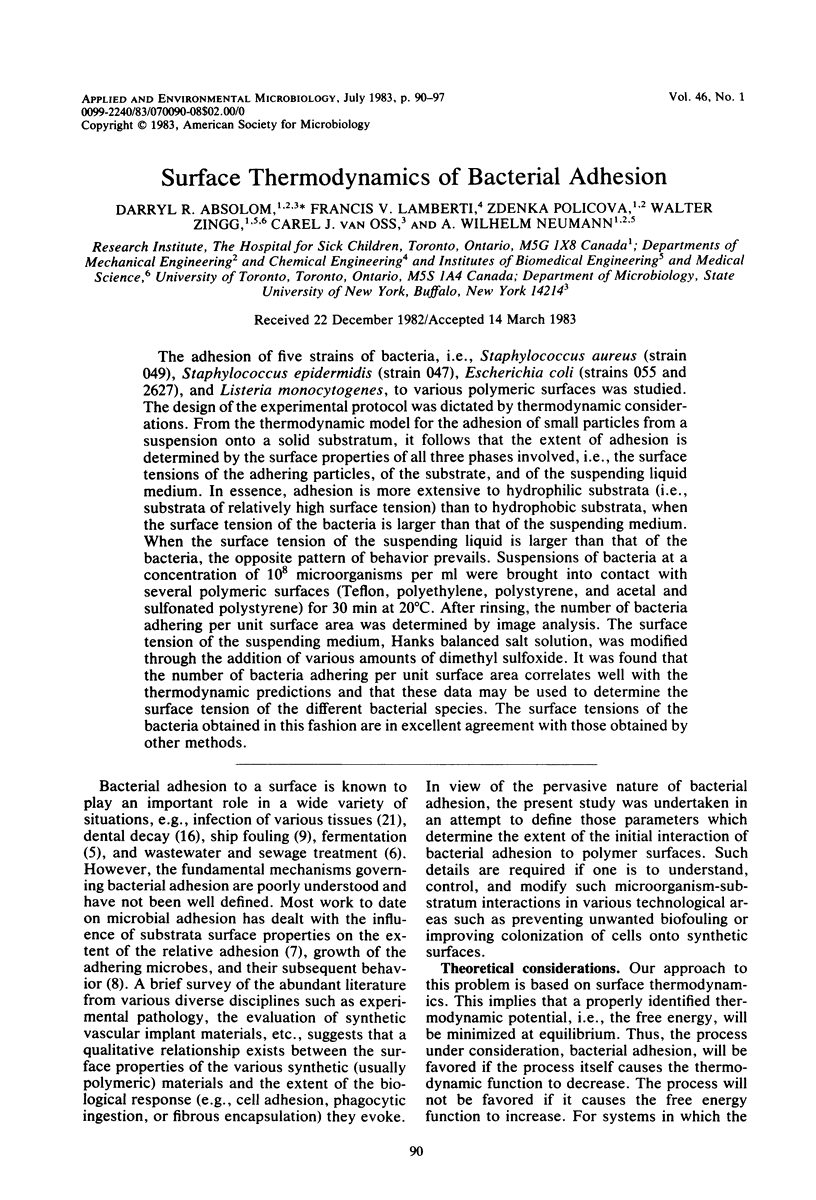
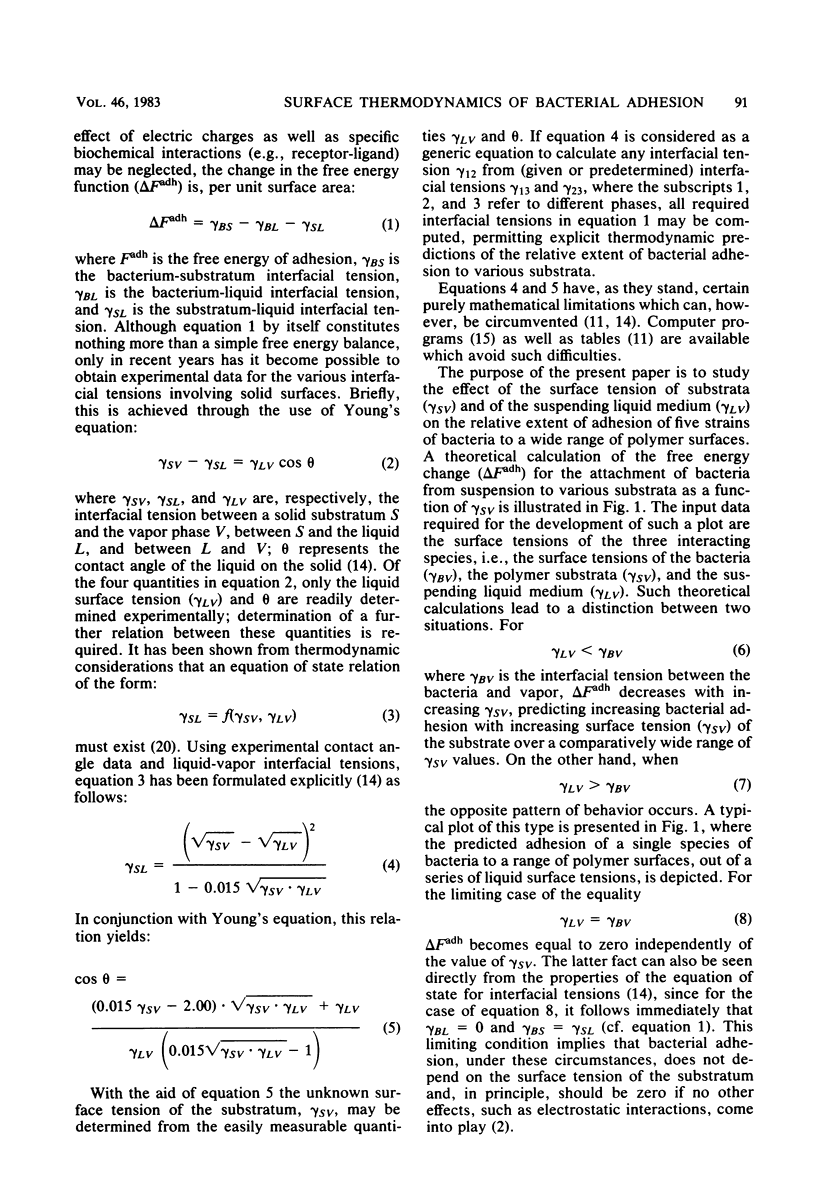
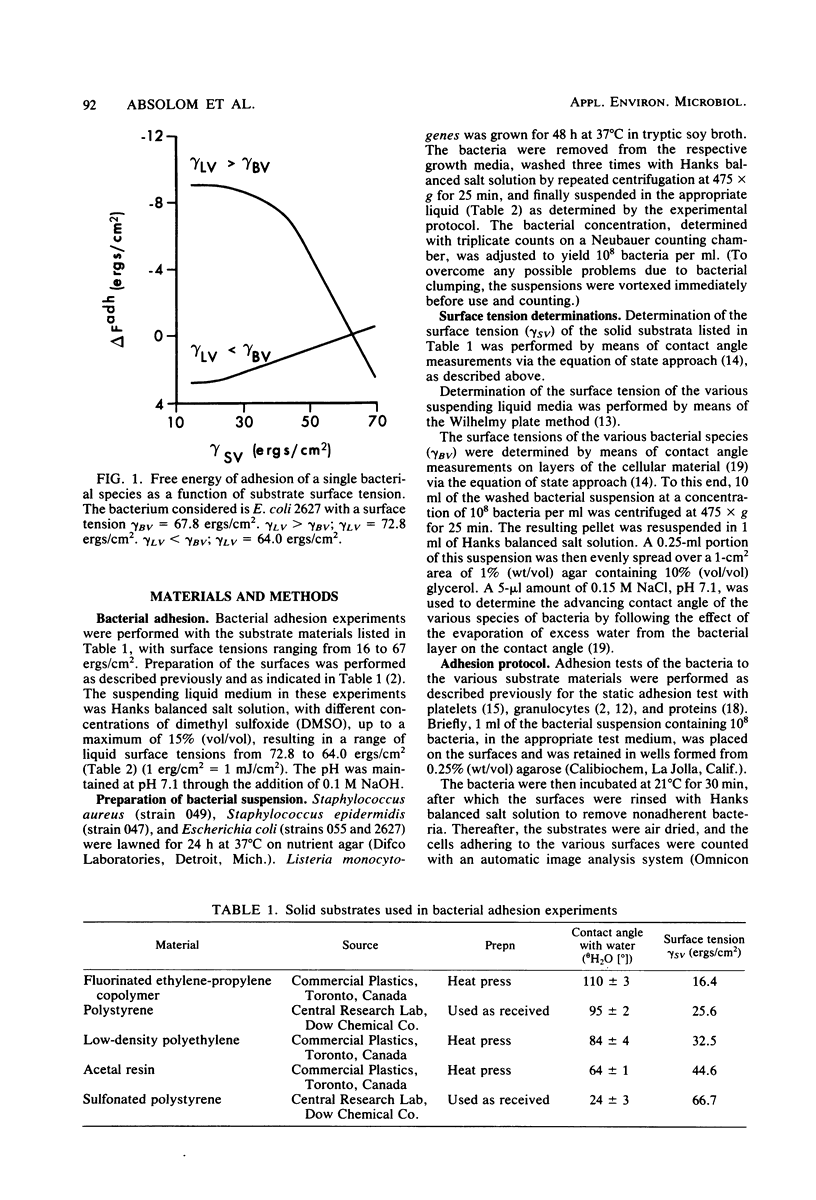
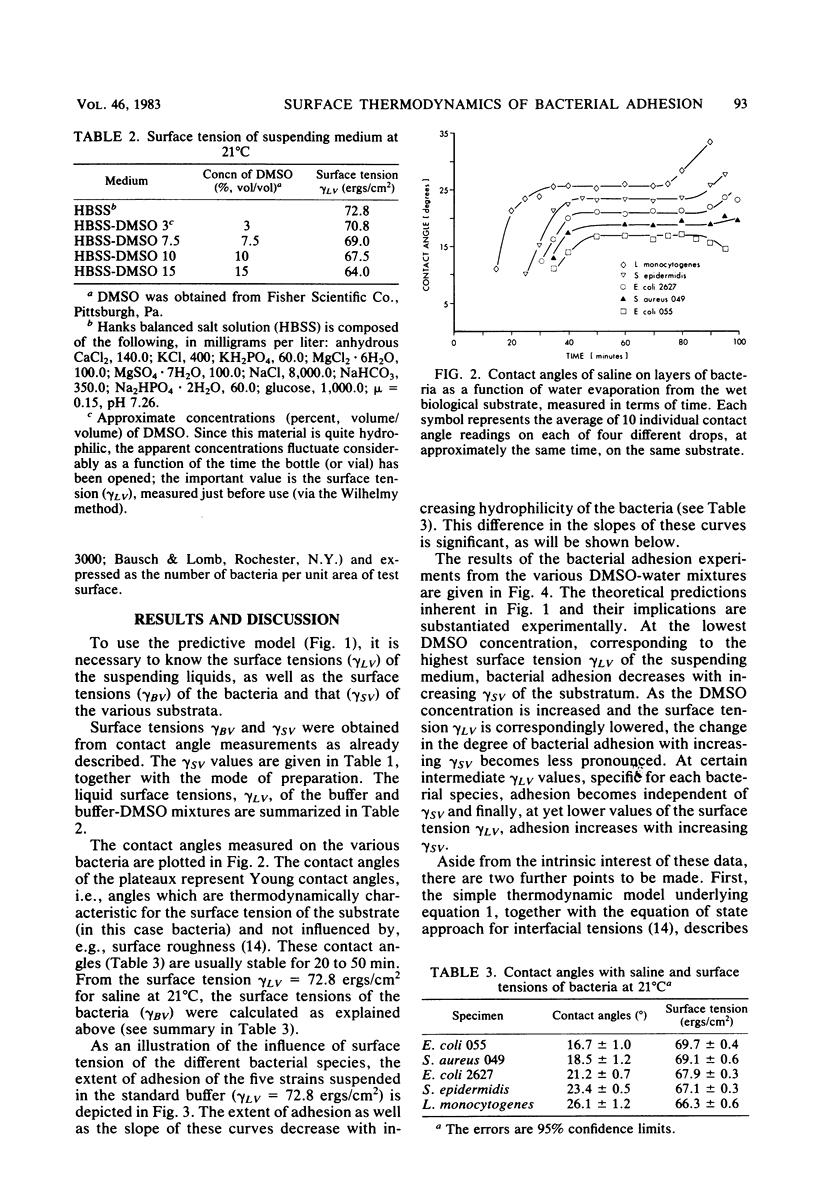
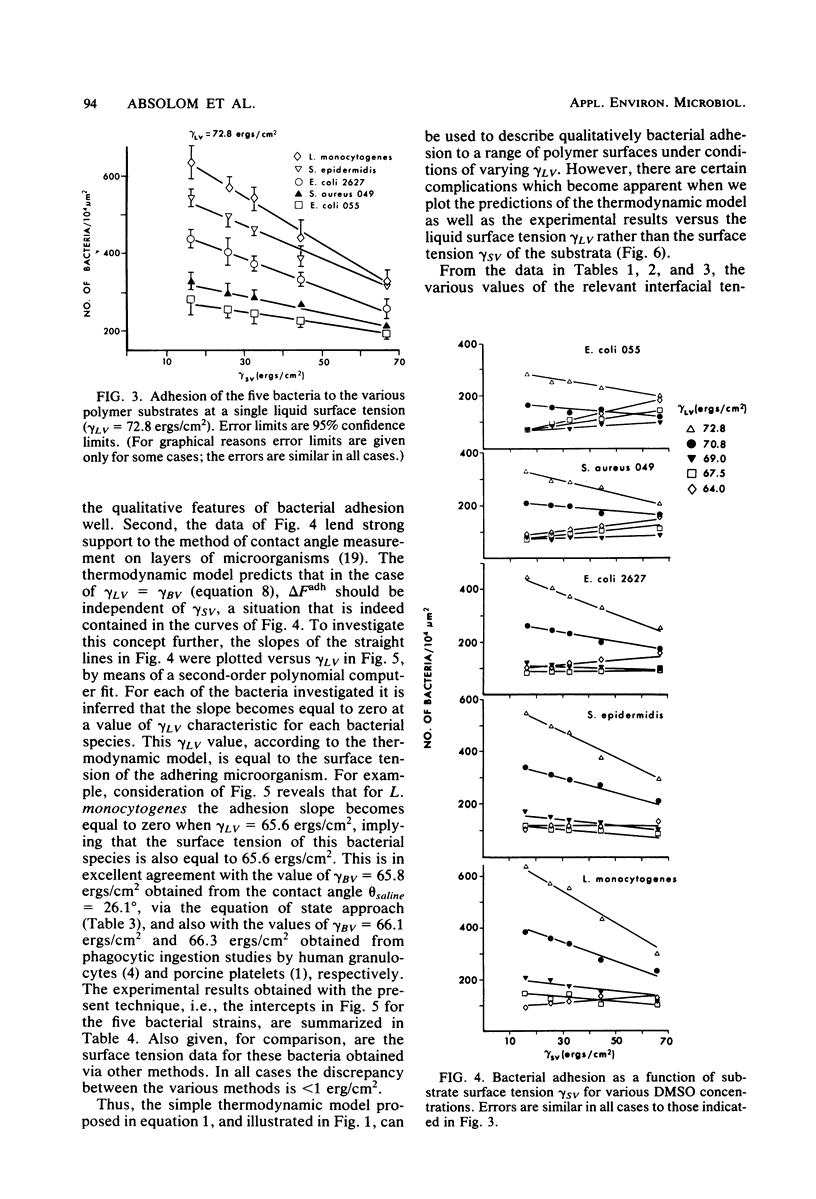
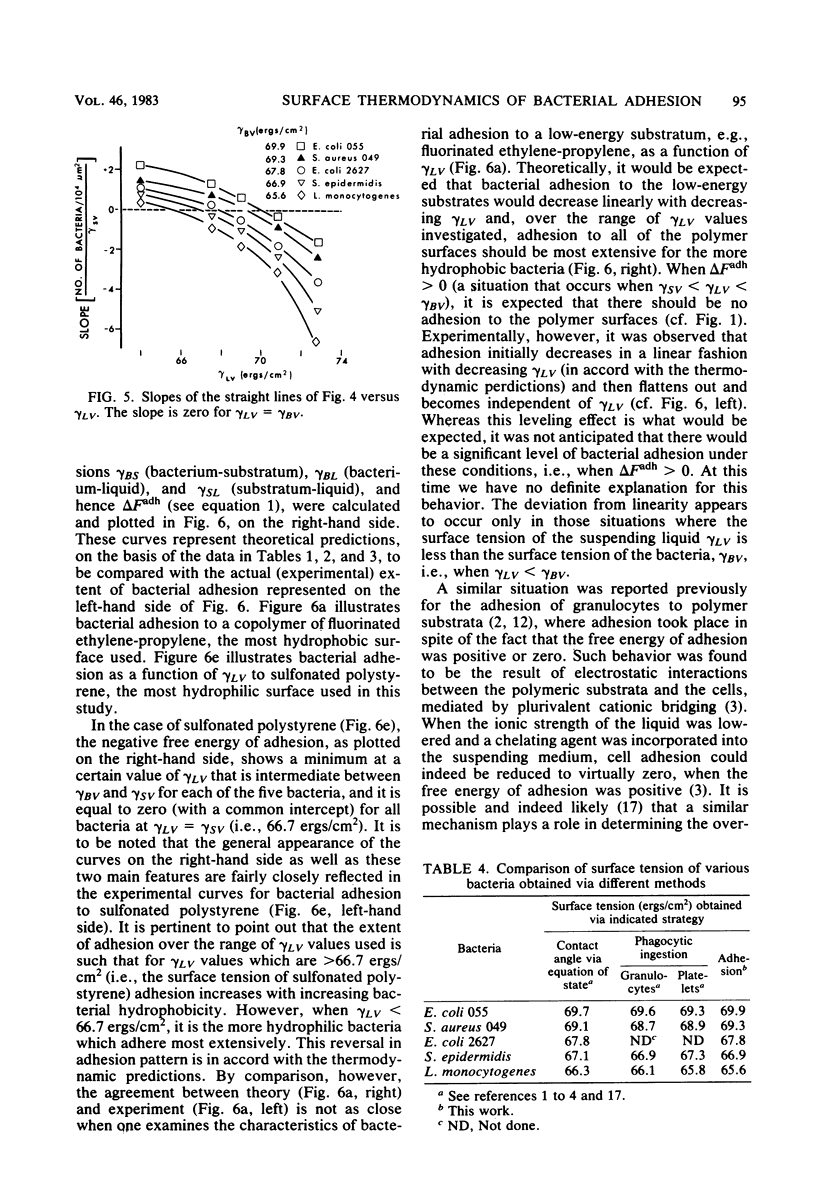
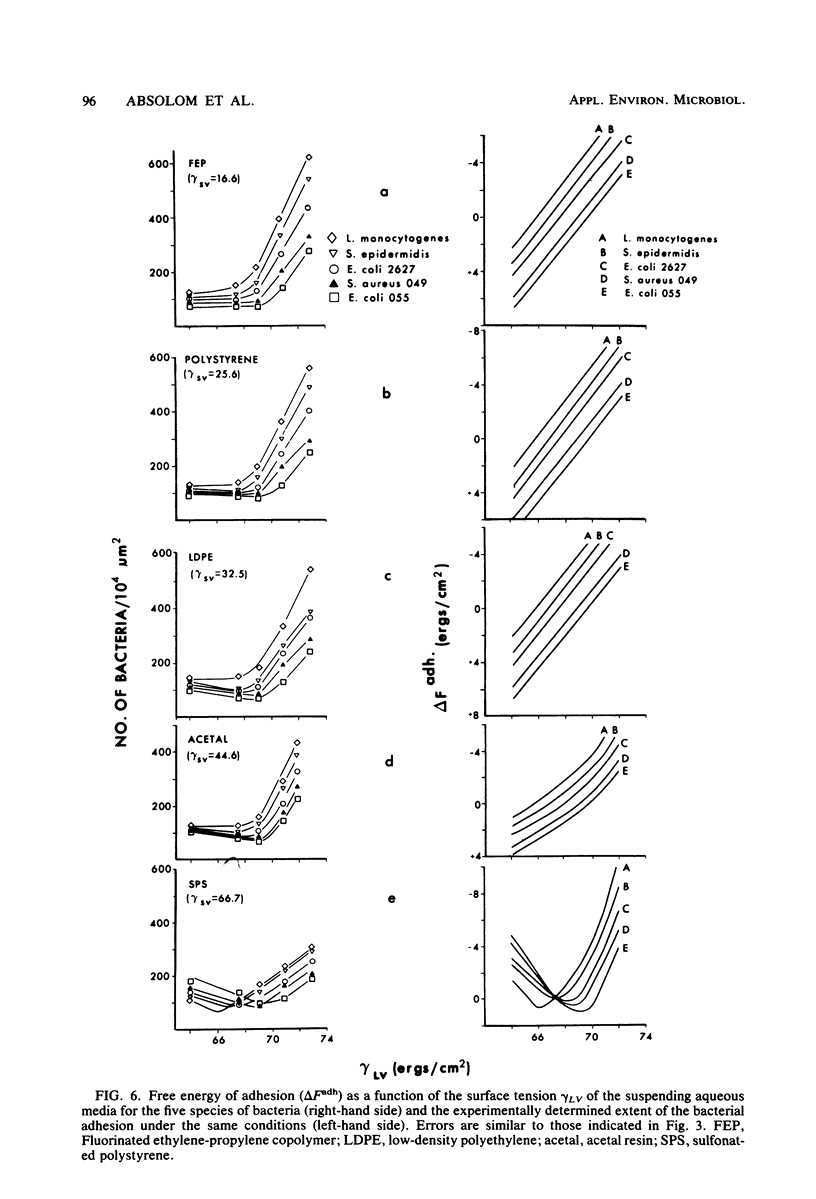
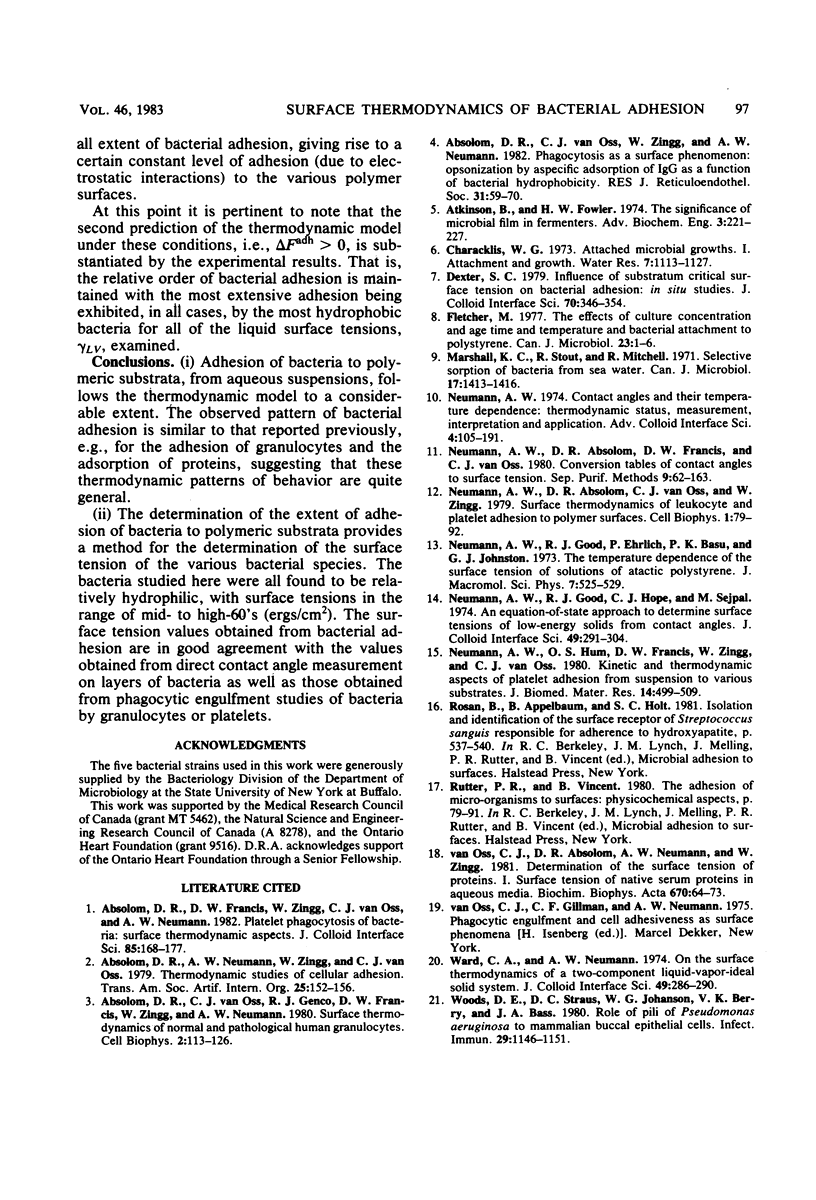
Selected References
These references are in PubMed. This may not be the complete list of references from this article.
- Absolom D. R., Neumann A. W., Zingg W., van Oss C. J. Thermodynamic studies of cellular adhesion. Trans Am Soc Artif Intern Organs. 1979;25:152–158. doi: 10.1097/00002480-197902500-00029. [DOI] [PubMed] [Google Scholar]
- Absolom D. R., van Oss C. J., Genco R. J., Francis D. W., Neumann A. W. Surface thermodynamics of normal and pathological human granulocytes. Cell Biophys. 1980 Jun;2(2):113–126. doi: 10.1007/BF02795838. [DOI] [PubMed] [Google Scholar]
- Absolom D. R., van Oss C. J., Zingg W., Neumann A. W. Phagocytosis as a surface phenomenon: opsonization by aspecific adsorption of IgG as a function of bacterial hydrophobicity. J Reticuloendothel Soc. 1982 Jan;31(1):59–70. [PubMed] [Google Scholar]
- Marshall K. C., Stout R., Mitchell R. Selective sorption of bacteria from seawater. Can J Microbiol. 1971 Nov;17(11):1413–1416. doi: 10.1139/m71-225. [DOI] [PubMed] [Google Scholar]
- Neumann A. W., Absolom D. R., van Oss C. J., Zingg W. Surface thermodynamics of leukocyte and platelet adhesion to polymer surfaces. Cell Biophys. 1979 Mar;1(1):79–92. doi: 10.1007/BF02785058. [DOI] [PubMed] [Google Scholar]
- Neumann A. W., Hum O. S., Francis D. W., Zingg W., van Oss C. J. Kinetic and thermodynamic aspects of platelet adhesion from suspension to various substrates. J Biomed Mater Res. 1980 Jul;14(4):499–509. doi: 10.1002/jbm.820140416. [DOI] [PubMed] [Google Scholar]
- Van Oss C. J., Absolom D. R., Neumann A. W., Zingg W. Determination of the Surface tension of proteins. I. Surface tension of native serum proteins in aqueous media. Biochim Biophys Acta. 1981 Aug 28;670(1):64–73. doi: 10.1016/0005-2795(81)90049-0. [DOI] [PubMed] [Google Scholar]
- Woods D. E., Straus D. C., Johanson W. G., Jr, Berry V. K., Bass J. A. Role of pili in adherence of Pseudomonas aeruginosa to mammalian buccal epithelial cells. Infect Immun. 1980 Sep;29(3):1146–1151. doi: 10.1128/iai.29.3.1146-1151.1980. [DOI] [PMC free article] [PubMed] [Google Scholar]


